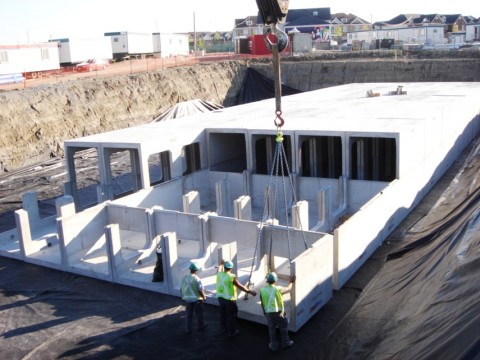Evaluation of an Underground Stormwater Detention Chamber System in Markham, Ontario
This project examines the hydrologic, water quality treatment and functional performance of an underground stormwater detention chamber system that was constructed in the South Unionville neighbourhood of Markham, Ontario to replace an existing stormwater detention pond. The StormTrap™ DoubleTrap® chamber system is one of the first installed in Ontario to meet the Ontario Ministry of the Environment and Climate Change guideline for enhanced water quality control that requires 80% total suspended solids (TSS) removal.
The overall objective of the study is to determine whether or not it is appropriate to consider underground detention chamber systems and stormwater detention ponds as providing equivalent levels of water quantity and quality control. To do this, the system was equipped with water flow and level sensors to monitor the rate of water release and evaluate the system’s watertightness. Temperature sensors were installed at the inlet and outlet to evaluate effects on runoff temperature and thermal loading. Automated water samplers at the inlet, downstream of the forebay unit, and outlet were used to collect flow-proportioned composite water samples and evaluate its pollutant removal efficiency. In partnership with the University of Toronto, a Model for Underground Detention of Sediment (MUDS) was developed for the prediction of hydraulics and TSS removal for both event and continuous-based modeling.
Preliminary results indicate that the underground detention chamber system achieves 82% removal efficiency for TSS. While it was found that concentrations of some pollutants exceeded provincial guidelines, the removal efficiencies were comparable to what is typically achieved by detention ponds. On average, runoff temperature was reduced by 2°C between the inlet and outlet, whereas temperature typically increases in detention ponds due to sun exposure. These results suggest that underground detention chamber systems perform similar to, or better than stormwater detention ponds in terms of TSS removal and thermal loading to receiving waters. It was also determined that the MUDS model was successful in predicting the hydraulics and TSS removal of the chamber system.
Photo credit: StormTrap™

